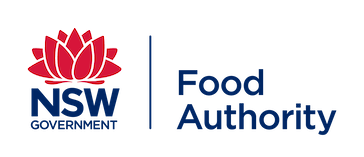Restaurants and takeaways
The vast majority of outlets the NSW Food Authority and local councils routinely visit are clean and hygienic.
But like any food, takeaway food has the potential to harbour microorganisms that can make you ill if it is not prepared, handled and stored correctly.
You can often tell a lot about the likely quality of takeaway food from the condition of the premises and appearance of staff.
If the premises look dirty, or the serving staff are untidy or have exposed wounds or obvious signs of infection, there’s a chance the food will also be substandard. The best advice is probably to turn around and walk out!
How you handle and store food after purchase is also important.
Choosing a takeaway outlet
Premises and equipment
The store should appear clean and tidy. Dirty premises may be an indication of their attitude to food safety.
Concerns include:
- grease build up around exhaust system
- mould on tiles or around fridge doors
- flaking paint on walls, especially above food areas
- evidence of pests eg. cockroaches or excessive flies
- dirty utensils and equipment piled up.
If you can see a hand basin:
- it should be clear of any utensils and other items such as cleaning cloths
- soap and paper towels should be available nearby.
Food handlers
Staff should:
- be clean, tidy and well presented with long hair tied back
- wash their hands after returning to work from breaks, sweeping floors, blowing noses and so on
- not smoke in areas where food is handled
- not eat or drink while preparing or serving food
- avoid unnecessary contact with ready-to-eat foods, and
- individual utensils should be available for each food being served/displayed.
It is not compulsory for food handlers to wear disposable gloves. If they do, the gloves should be clean, intact and changed regularly during the day. Disposable gloves should not be reused and new gloves should be worn when commencing food handling activities.
Ready-to-eat food is ideally not handled after handling money, although the safety risk is generally low.
Foods that will be cooked such as raw meat may be handled with clean bare hands.
Food
- perishable foods such as sliced meats and some sandwich fillings should be kept refrigerated
- hot food should be kept hot. Look for steam coming from the bain marie or condensation on glass surrounds
- cold food should be kept cold. Make sure the display feels cold to touch, and look for frost or ice around the corners of cabinets
- foods such as sandwiches and sushi can be displayed at room temperature for up to 4 hours only. If these foods are stored unrefrigerated, ask how long they have been displayed before buying
- avoid buying 'tired' looking food, it might have been on display for a long time
- food should not be overloaded or piled high in display bars
- disposable food packaging and utensils such as knives and forks should not be reused.
After purchase
- foods should be consumed as soon as possible after purchase
- if you intend to eat later, refrigerate and ensure it is reheated to steaming hot. See doggy bags and key food safety tips.
Re-usable containers
If you ask a food business to use your own re-usable eating or drinking container, e.g. a travel coffee mug, make sure it is clean. The food handler does not have to accept re-usable containers from customers, especially if they are dirty.
